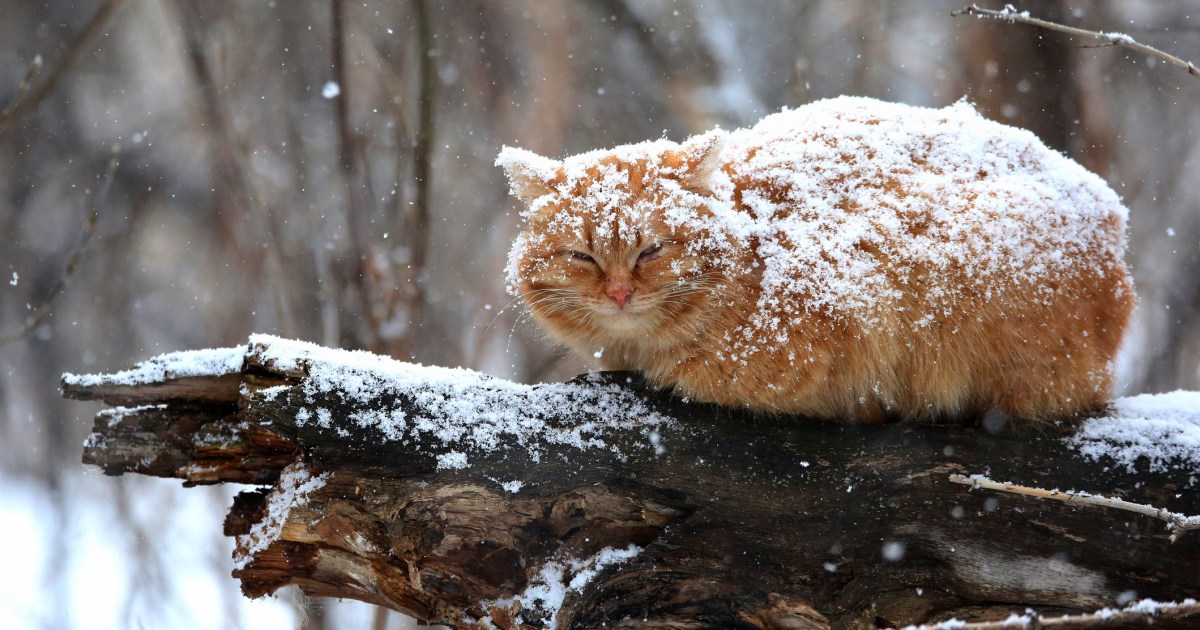
The weather is getting colder, with an arctic bast in full swing. You might be worrying about the cats you see wandering outside in your neighborhood. They might be feral cats, cats who sneaked away from home and got lost, strays, or even abandoned animals.
You may not know how they got there, but no matter how resourceful these cats might be, they could all use a little help surviving the winter. That’s especially true if you live in a colder environment where it snows.
Helping these cats won’t take much time, and the felines will be grateful for your efforts. Here are a few tips to keep outdoor cats safe in the cold winter months.
Give outdoor cats a place to stay warm during a cold front
Almost anything can be turned into a shelter for an outdoor cat in winter as long as it offers a safe refuge from the elements.
You can go simple or fancy. You can buy a shelter online or at your local pet store, or you can even make your own. Whatever you end up using, make sure it’s dry and well-insulated.
Tips:
Larger isn’t always better, since a smaller enclosure can do a better job at trapping the heat coming from the cat’s body.
For larger colonies, cats often huddle together, so plan on shelters that can hold three to five cats each.
Raise shelters off the ground to help conserve heat.
Place shelters in safe locations away from cars and foot traffic.
Doorways should only be large enough for a cat to pass through to eliminate threats from predators such as dogs or coyotes.
Use insulation! Make sure you use only non-absorbent materials that will keep cats dry and replace them when they get dirty or wet. Straw — not hay — is often used, because it repels water and allows cats to burrow into it. Making your shelter out of a styrofoam cooler or wallpapering its walls with mylar are good options to protect against extreme weather.
Help outdoor cats find food
During cold weather, outdoor cats require extra calories to stay warm. Many will have a hard time finding enough food to survive until spring.
Make sure to either feed them more food or feed them more often.
Tips:
Water bowls can spill, so don’t put them inside the shelter. Instead, place food and water as close as possible to the shelter itself. The Humane Society recommends placing two shelters several feet apart, facing their doors together. A canopy can be created by securing the ends of a long board onto both roofs. Then both food and water can be placed beneath it.
You can also build a separate feeding station. Similar to your shelter, it should have a roof and be kept off the ground.
Dry food is less likely to freeze, but wet food is easier to digest which helps cats conserve their energy for staying warm.
To prevent water from freezing, use solar-heated bowls or ones that are dark colored, are made of thick plastic, and are deep with a small opening.
Trap, Neuter/Spay, Release programs can help
The winter is a great time to trap stray cats and neuter or spay them, then release them back into the neighborhood once they’ve recovered.
Every spring, shelters and rescues are swarmed with adorable baby kittens from these stray neighborhood cats who have not been spayed or neutered. Help end kitten season forever by getting stray cats neutered or spayed.
This is important because feral cats can serve a purpose in our neighborhoods, but a stray mama cat can give birth to 24 kittens in one year, and that’s a lot of cats roaming the neighborhood.
Tips:
Set up your trap in an enclosed area to protect the cat from the cold.
If possible, trap as far away as you can from the shelter you’ve built. This helps maintain privacy and a sense of security for other cats in the colony.
Use magnetic vent covers instead of newspapers to line the bottom of your trap. Newspapers can flap in the wind, scaring away feral cats.
Microwaveable heating pads will help to keep bait warm and smelly.
By following these steps and being in tune with the needs of the cats in your area, you can help outdoor or stray cats survive comfortably through the cold winter months.


.png?format=1500w)



